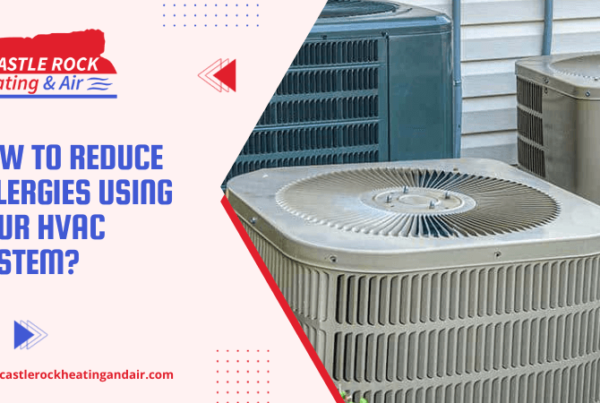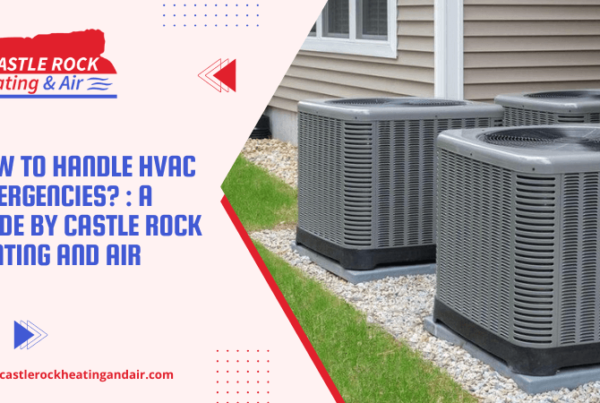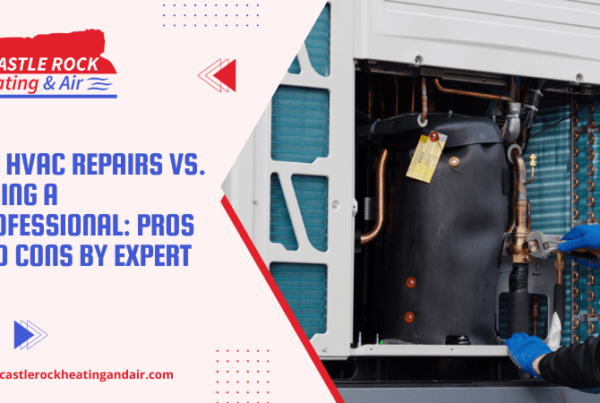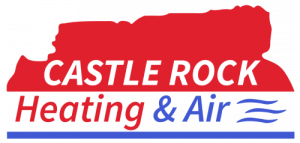
Heating, Ventilation, and Air Conditioning (HVAC) Systems are essential elements of every home. They are responsible for managing the temperature, ventilation, and purification of indoor air.
And based on how they work, they come in different types. In this blog, our experts at Castle Rock Heating and Air have discussed an overview of some common types of HVAC systems to help you know them better.
5 Common Types of HVAC Systems
Although there are many varieties, we can classify them into five basic types:
- Split Systems
- Hybrid Systems
- Packaged Heating and Air Systems
- Ductless mini-split systems
- Portable systems
⇒ Split Systems
This is the most common type used in most residential buildings. As the name suggests, these systems split into two separate parts. One is a heating unit, and another is a cooling unit. We can control both parts of the system with a single thermostat.
The cooling unit stays outside the building to cool the air and keep the hot air away. And the heating system remains inside the house to heat the air and circulate in the entire home.
Key points:
• They are ideal for homes
• Fit for both summer and winter
• Can be used for extreme heat or high colds
• Can control each part separately
⇒ Hybrid Systems
This system is hybrid because it can switch between gas power and electricity. Split systems rely on gas. But with the hybrid system, we can choose the type of energy we want to use: gas or electricity. That helps save energy costs. So we can call it an efficient system for that purpose.
Key points:
• Not ideal for extreme temperatures
• Flexible with power supplies
⇒ Packaged Heating and Air Systems
Packaged systems are the ones that contain both heating and cooling units combined in one system. They are small-sized systems as compared to the other types. We need to install them on the roof or attic because they need to be as high as possible.
Key points:
• Best for homes with less space
• Single unit for both heating and cooling
• Weak at heating, so better for warm climates
⇒ Ductless mini-split systems
These are also among the common types of HVAC. They are smaller units, and we can use them separately for every room/area. Unlike the other types, they offer more control over the temperature as per need. They are most commonly used when your entire place does not need a consistent temperature but needs to divide into zones.
Key points:
• Room-to-room flexible control
• The need for HVAC maintenance is more
• Better for multifamily homes, hotels, etc
⇒ Portable Systems
Portable HVAC systems are not installed in one place, unlike others. They are systems that can be easily moved from one room to another for heating and cooling. Some systems provide just air conditioning. And others also come with both facilities. They often come with hoses to keep near the windows to take and blow out the air.
Key points:
• Not as powerful as full HVAC systems
• Provide better mobility
• Not ideal for large spaces
Summing Up
HVAC systems have different types as per their functioning and installation. Every type has its own purpose and ideal situation to use. Depending on your need, you can choose the right one.
In short, split systems are common for residents. Hybrid systems are ideal for energy savings. Packaged systems are best for small spaces. Mini splits are ideal for separate room-to-room control. And portable systems are easy to move and customize.





